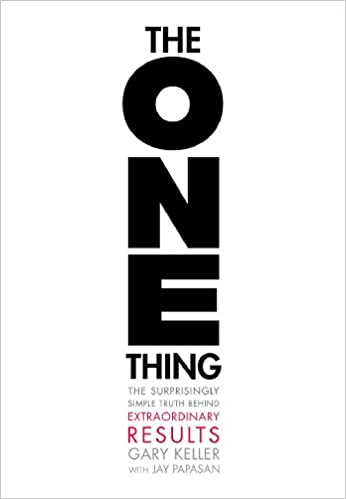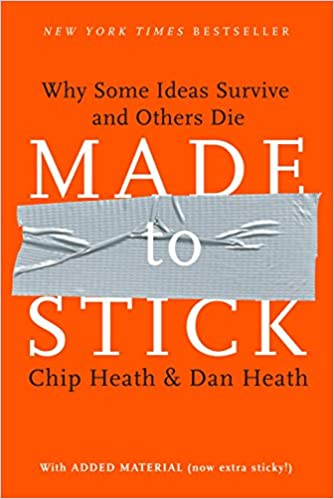
Book: Contagious: Why Things Catch On
Authors: Jonah Berger
Year Published: 2013
Publisher: Simon & Schuster
Read More on Amazon
BOOK SUMMARY
TOPLINE
Advertising is ubiquitous in our world. We also know that successful advertising creates a positive influence on our behavior, to encourage us to buy something. The best advertisements are pieces of ingenious communication that, in doing their job, quite literally become the talk of the town.
Those pieces of communication that spread through word of mouth and become viral, create lasting impressions. These viral pieces of communication are much more impactful in building long term value for the brand or cause that they are promoting.
The word of mouth communication works on the premise that people look for an opinion from a trusted source before they make a big purchase or a substantial commitment. This trusted source of information often tends to be their friends and acquaintances, and not advertising or promotion.
The question that marketers try and grapple with is, what causes this virality – ‘what fuels this buzz’?
In ‘Contagious – Why Things Catch On,’ Professor Jonah Berger explains why some topics catch fire and get shared around the world, while other issues or pieces of communication get ignored. Berger demonstrates through liberal use of examples and cases how products or causes transform from mere company communication into a topic of public conversation.
His book is a distillation of years of research. It explains the reasons why certain product advertisements, social movements, or even restaurants catch on, while others languish, ignored.
BOOK SUMMARY
How does a product or an idea become a talking point?
A marketer looking for ways to make their product or service successful may find that it’s not easy to ignite a buzz about their offering. Products that are significantly superior to other products in the market or those that are considerably better priced can sometimes find it easy to become successful. However, that is not always the case. What happens, for instance, in a mature market, where products are generally at technology and price parity?
Therefore, quality, technology, and price by themselves cannot provide the answers to why some products or ideas gain social contagion, and others don’t.
Berger argues that this traditional view of marketing misses the big picture. The top reasons that drive 20 to 50% of all purchasing decisions are social influence and word-of-mouth transmission of ideas.
This virality of ideas comes about because people trust their friends, acquaintances, and those that they hold in high esteem far more than advertisers.
Berger further makes the point that social media, e.g., Facebook, Twitter, etc. are merely tools that can help spread ideas. They are not the solution for the adoption of ideas. Face to face interactions is more effective in spreading the contagion of an idea.
Your goal as a communicator is to create “contagious content.” Content that goes viral becomes a part of everyday conversation. To achieve this, you have to understand why people talk about things?
This understanding can help you develop ideas that drive conversation to your product or cause.
This book lays out Berger’s Six Principles of Contagiousness. These are Social currency. Triggers. Emotion. Public. Practical value. Stories. Or, as an acronym, “STEPPS.”
-
Social Currency
Humans like to share things. We want to share something that makes us look good in the eyes of others. This sharing is perhaps the key reason behind the popularity of social media.
Sharing ideas, our likes, our opinions, etc. convey our identity to the people that we share our views with.
The other key reason that we share is that sharing interesting or valuable ideas makes us look good in the eyes of others. Sharing details of a hot new product, or a movie or a restaurant makes us as the sharer look smart, even hip. For example: sharing pictures of a trip on Instagram conveys how cool our lives are!
This behavior of sharing of thoughts and ideas, Berger calls ‘social currency.’ We build our social wealth by sharing and positively influencing others. What we say or share influences inevitably how others perceive us. This desire for social wealth creates pressure upon us to share things that make us appear smart, funny, or hip.
We use money to buy products or services. In the same way, we use social currency to gain recognition, admiration, or trust of others.
How should marketers use social currency? Berger says that the goal should be to achieve great word-of-mouth. To achieve this goal, the marketer needs to provide people a way that can make them look good while what they communicate helps to promote the marketer’s products and ideas.
There are three components of achieving this:
- Find inner remarkability
- Leverage game mechanics
- Make people feel like insiders
Inner Remarkability – Make your product remarkable. Break the predictable pattern. People desire to share things that are out of the ordinary.
An example of Inner remarkability could be of the budget airline JetBlue. It offers spacious seating, a variety of snacks, and individual video screens. Perks that its flyers don’t expect and will therefore remember.
Leverage game mechanics – Game mechanics, are the elements of a game or program that makes the game both fun and compelling.
Marketers should use game mechanics in their marketing to motivate their customers to try and achieve a level or status; in essence, gain social currency. For example, a well thought out loyalty program at a hotel will make it more likely that the customer will return to the hotel that he or she is a member of a program. This loyalty program membership will be a glue that keeps the customer committed to the hotel, while he/she earns more reward points, or earns a new membership level, rather than move to a competitor.
Make people feel like insiders – a sense of scarcity and exclusivity of a product or service drives its desirability.
A “member only” or “by invitation only” communication to an event, sale, etc. will be more desirable to the people invited, since they feel like insiders, rather than an event or sale which is open to everybody. Similarly, a campaign that uses the words’ limited availability’ suggests scarcity and will create pressure upon the customer to make a decision quickly.
-
Triggers
Triggers help keep ideas’ top of mind and on the tip of the tongue.
Social currency involves giving people a reason to talk about things. Triggers, on the other hand, are devices that keep ideas or products top of mind for people. Triggers ensure that the conversation about the idea or product does not stop.
Triggers are like stimuli that connect things to the idea or product that we are trying to promote. The larger the number of triggers associated with your product, the more likely word of mouth will spread for your product or idea. Triggers are influenced by their frequency and by the strength of the link between your product and the triggers. A fresher trigger could generate more significant word of mouth effect.
As a marketer if you can provide people reasons to think about your product, the chances are that this will generate a further word of mouth effect, as they talk about it. In becoming a part of the word of mouth communication for your idea or product, they will themselves become repeat customers of your product.
According to Berger, accessible thoughts and ideas lead to action. This accessibility is the reason why it matters that an idea is top of mind.
An example would be the sales of the Mars Candy company going up when NASA was planning a mission to the planet Mars. There is no ostensible link between the Mars Candy Company and NASA. However, the continuous news cycle about the NASA mission helped bring the ‘Mars’ name top of mind, and that leads to an effect similar to that of a promotion that the Mars candy company may itself have run for its products.
If this appears a little confusing, consider this:
– If you think of the color Red and Soda together, what do you think of?
– If you think of ‘take a break,’ could you be thinking of KitKat too?
– When you think of Sidney Crosby, could you be thinking of the Pittsburgh Penguins?
– If you are an American, what would hot dogs make you think about?
-
Emotion
When we care, we share.
People like to talk about subjects that impact them emotionally. This desire is also why ideas when they strike a chord with people, attain virality. People love sharing information both face to face as well as on social media, about ideas that they find amazing or unique.
The presence of positive and negative emotional impact can drive activism in politics, cause people to switch their consumption from one brand to another, or get them to write an online review asking people to either fly or not to fly with a particular airline.
Berger explains that positive emotions help initiate action while negative emotions cause a lack of action or a move away from the idea or product, that has caused the emotion. Negative emotions could, on the other hand, be useful, for example, with a ‘medical’ product.
A sense of excitement or awe and humor help drive arousal in the same way as does anger and anxiety. People do not like to share content or ideas connected with sadness.
A “high-arousal” emotion like amusement is an essential driver of interest in sharing, but on the other hand, the emotion of both happiness and sadness tends to bring down the desire to share.
Therefore, understanding how people react to your idea or your product is crucial to understanding how you can create and drive viral content about your idea or product. This understanding of how people think about your product should have primacy over the features and benefits of your product, for instance.
In other words, rather than focusing on features or benefits, the focus needs to be on feelings. Feelings are the basis for emotions that motivate people to action.
-
Public
This principle concerns observability. When things are observable, they are easier to imitate.
The principle of observability is behind Steve Jobs’ decision to place a large, easily observable logo on the Apple laptop facing away from the user. Having the logo face the people around the user, led to the generation of greater interest in the Apple laptop.
This social proof helped persuaded many people to purchase an Apple laptop. The premise here is that we are all constantly inundated with information, and to take action, we need the opinions of others before we make our decision to purchase.
Berger calls this concept of looking at what others are doing to resolve our uncertainty, “social proof.” People imitate the actions of other people because their observation helps them with proof that the product or idea is acceptable to others.
When we make our products or ideas more public, we facilitate the creation of self-promoting ideas that stick. The more observable a product, the more the likelihood that it would catch on.
Berger provides examples that, when looking for restaurants in a new city, we look for restaurants that are full of people. The premise here is that if the restaurant is full of customers, the food must be good quality and well priced.
Making the Private Public:
The idea behind making the private into public is that if your idea can bring into the conversation something that people were previously embarrassed to talk about. You can then eliminate the embarrassment and help the product or idea catch on with people who were thus far uncomfortable with it.
Two examples that Berger provides are that of: ‘Online dating’ or the promotion of ‘Movember.’
Self Advertising – This is the communication of an idea or product through social proof from the product’s usage, for example, logos on shirts.
Behavioral residue – This is the story or idea that remains left behind after purchase, and the use of a product. For example, the “I Voted” sticker brings a private act into the public realm and encourages other people to vote.
-
Practical Value
News others can use.
People like being useful. People also like to be able to help other people. Therefore, information that has practical value and which will help others save time, save money, or something else becomes easy to spread by word of mouth. The advice could be simple, for example, a great deal available on a brand of clothing! People share these kinds of practical value advice because they like helping their friends.
Practical ideas or advice spreads long distances. For example, parents send cooking or spending advice to children even when they are far away. This kind of communication helps to strengthen social bonds.
The fulcrum necessary for companies is to position this information in such a way that it stands out as being useful to its consumers.
Practical value also depends upon buyer behavior. People rely upon their reference points to determine the value represented by a price or equally by a discount.
Prices – someone who had purchased airline tickets when there was no surcharge for a checked-in bag or seat selection or on-board food would complain massively if the fare increased for a trip, for example, from $400 to $425. To the millennial who has only seen prices where surcharges were the norm, this would be a more reasonable increase.
Discounts – A price-tag at a retail store or the price of a product displayed on Amazon would show both the original price as well as the discounted price. This point of reference helps to convey to the customer that he or she is getting a good deal.
The Rule Of 100 – when customers compare prices, the rule of “diminishing sensitivity” can impact buyer behavior. The “Rule of 100” works like this.
- If the product sells for lesser than $100 – the discounted or sale price should be written showing the discount as a percentage. The discounts as a percentage appear to be more substantial on lower-priced products.
- If the product sells for greater than $100 – the discount provided is better expressed in dollar terms. The discount shown in dollar terms appears to be more substantial on high-cost items.
-
Stories
People don’t tend to think in terms of information. They instead think in terms of ‘Stories’ or narratives.
Stories have a deep connection with people; they have been a medium for delivering information over millennia. Stories carry lessons and morals. Stories also convey information and messages.
This fascination with stories is the reason why we would describe a bargain or a fantastic product experience in such great detail to our friends. This story, in addition to our experience, is a recommendation of the product or service.
At the same time, people are increasingly skeptical of advertising in any form, as they don’t always trust the information behind the advertising messages. However, placing your ad with subtlety, within a well-told story, can help deliver the message to the target customer efficiently and effectively.
The ad message should be embedded into a story in such a way that it is impossible to tell this story without the product or idea embedded in it. The story will then be narrated and stay in circulation for as long as the story is kept current.
Factors that are critical to ensuring that your brand’s story is recalled and narrated frequently is to ensure that “sticky” elements like humor, or creativity, or quirkiness are woven into the story.
An excellent example of compelling storytelling is that of a promotion run by Dove skin products. Dove created a video about the effort that went into making models look beautiful for an advertisement. Dove made the case that ‘Real Beauty’ was about feeling comfortable in your own skin.
Dove asked customers to send in videos telling their own stories about what they felt was ‘Real Beauty.’ Thousands of videos poured in, making this a very successful brand communication effort that was only part advertising campaign.
The brand Dove was woven deeply and visibly into the story and the engagement that it received from Dove’s customers.
In sum, in today’s market, there is a deluge of advertising messages in every medium that we use. To stand out in this crowd, a company’s products or ideas need to leverage the 6 STEPPS effectively. Leveraging stories that are interesting, engaging, and useful will help create a conversation about our products, increase social influence, and increase word of mouth transmission.
RECOMMENDATION
I highly recommend ‘Contagious.’
Contagious is a book that advertisers, marketers, sociologists, politicians, and entrepreneurs of all stripes and experience, will find extremely interesting, instructive, and valuable.
The book is perhaps especially useful for people outside of the advertising world. It will help them understand how advertising works from a sociological perspective. It will help explain how we, as a species, react to advertising stimuli and social proof. It will demonstrate methods of how to fuel the buzz around their latest product or cause.
In understanding how advertising works, readers can learn to spot powerful advertising messages. They can equally learn how to ignore the effects of advertising, once they recognize the buttons being pushed.
Reading the book will give you access to the research and stories that Professor Berger uses to elucidate the points that he makes.
Paraphrasing the book’s terminology, this book will provide the reader with both practical value and social currency to share!
Jonah Berger is a Professor of Marketing at the University of Pennsylvania’s Wharton School of Business.




